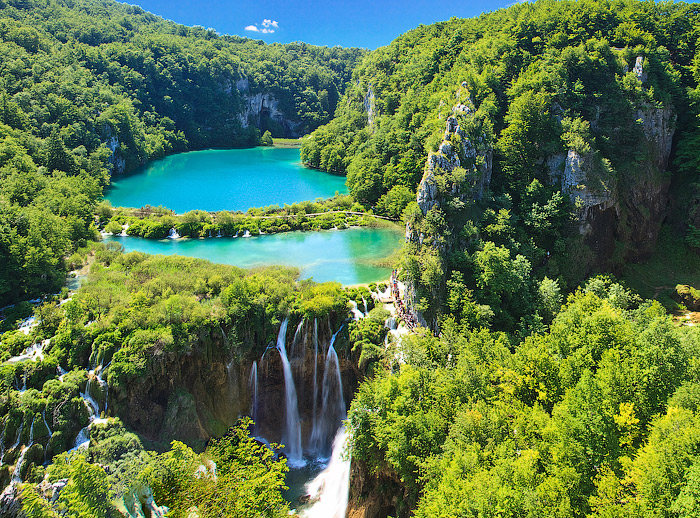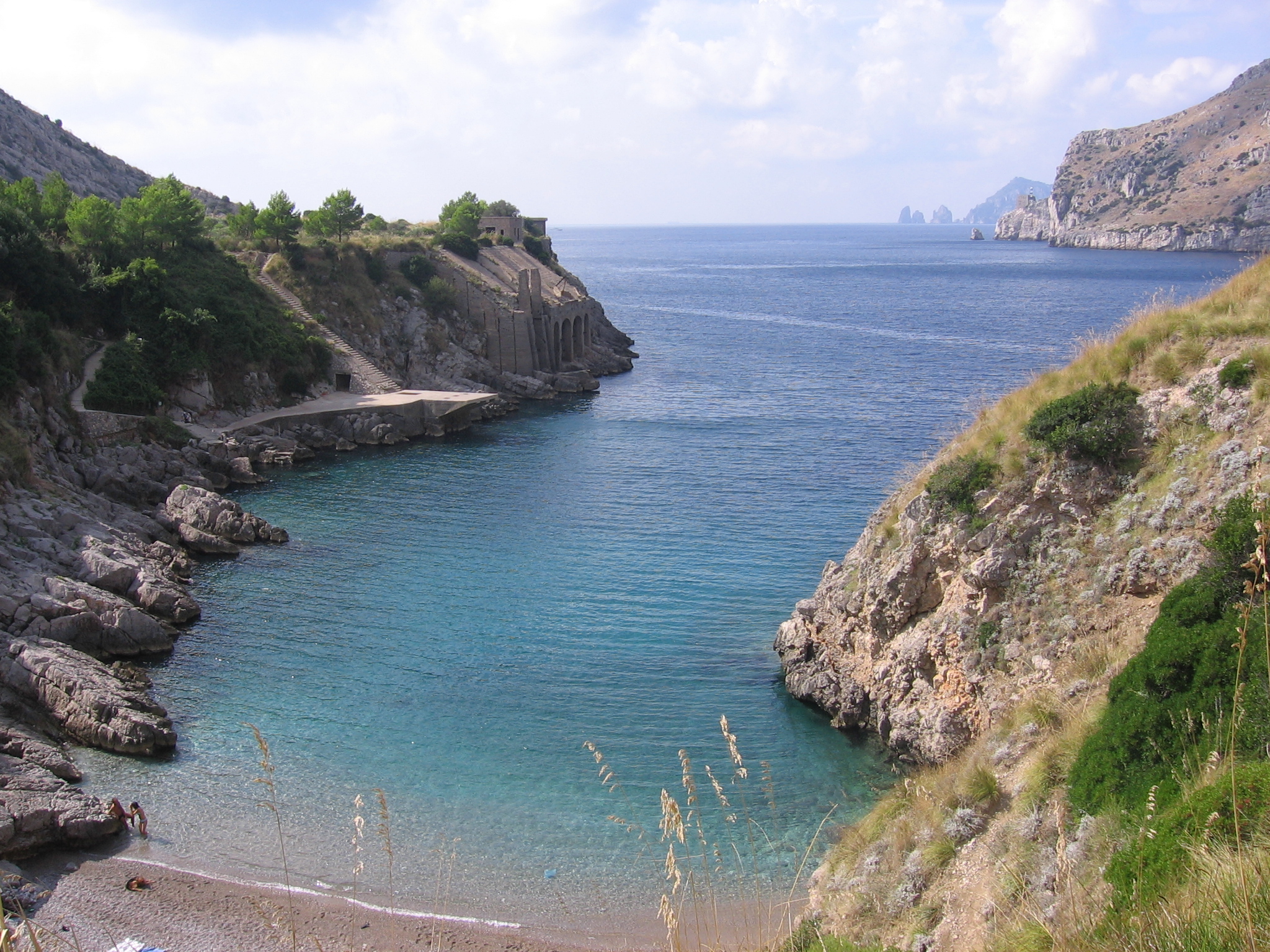|
Telašćica
Telašćica () is a bay in the southeastern part of the island of Dugi Otok, Croatia, in the Adriatic Sea. It is a designated nature park, full of wildlife and marine creatures. Geography Telašćica is a 10 km long, 160–1800 m wide, deep inlet dotted with cliffs, islets and bays. The cliffs of Dugi Otok, called the ''stene'' locally, rise to 161 m above sea level and drop down to a depth of 90 m. Telašćica bay, which actually consists of three smaller bays, is a good, safe harbour for all kinds of vessels. The northeastern side of the bay is completely bare, but the southwestern shore is covered in thick forest of pine, olive and fig trees. There are six islets and rocks in the bay: Korotan, Galijola, Gozdenjak, Farfarikulac, Gornji Školj and Donji Školj. Lake Mir is a saltwater lake on a narrow strip of land between Telašćica bay and the open sea. The lake is salty due to underground connections to the sea. See also * Protected areas of Croatia The main prote ... [...More Info...] [...Related Items...] OR: [Wikipedia] [Google] [Baidu] |
Dugi Otok
Dugi Otok (; Croatian for "Long Island") is part of Croatia and the seventh largest island in the Adriatic Sea. It is located off the Dalmatian coast, west of Zadar. It is the largest and westernmost of the Zadarian Islands, and derives its name from its distinctive shape: it is long by wide, with an area of . Its elevation reaches 300 m; and many of its higher portions contain stands of Maritime Pine. The western coast is tall and rugged, and many of the towns are clustered on the eastern side, including Sali, the largest, Zaglav, Žman, Luka, Savar, Brbinj, Dragove, Božava, Soline, Verunić (Verona) and Veli Rat. A nature park, Telašćica, covers the southern part of the island and is adjacent to Kornati Islands National Park. There are six islets and rocks in the Telašćica Bay: Korotan, Galijola, Gozdenjak, Farfarikulac, Gornji Školj and Donji Školj. Population Population Movement History History The island has been inhabited since prehistor ... [...More Info...] [...Related Items...] OR: [Wikipedia] [Google] [Baidu] |
Adriatic Sea
The Adriatic Sea () is a body of water separating the Italian Peninsula from the Balkans, Balkan Peninsula. The Adriatic is the northernmost arm of the Mediterranean Sea, extending from the Strait of Otranto (where it connects to the Ionian Sea) to the northwest and the Po Valley. The countries with coasts on the Adriatic are Albania, Bosnia and Herzegovina, Croatia, Italy, Montenegro, and Slovenia. The Adriatic contains more than 1,300 islands, mostly located along its eastern coast. It is divided into three basins, the northern being the shallowest and the southern being the deepest, with a maximum depth of . The prevailing currents flow counterclockwise from the Strait of Otranto. Tidal movements in the Adriatic are slight, although acqua alta, larger amplitudes occur occasionally. The Adriatic's salinity is lower than the Mediterranean's because it collects a third of the fresh water flowing into the Mediterranean, acting as a dilution basin. The surface water temperatures ... [...More Info...] [...Related Items...] OR: [Wikipedia] [Google] [Baidu] |
World Heritage Sites In Croatia
The UNESCO, United Nations Educational, Scientific and Cultural Organization (UNESCO) World Heritage Sites are places of importance to cultural heritage, cultural or natural heritage as described in the UNESCO World Heritage Convention, established in 1972. Croatia, following its Independence of Croatia, declaration of independence from Socialist Federal Republic of Yugoslavia, Yugoslavia on 25 June 1991, succeeded the convention on 6 July 1992. Currently, there are ten sites inscribed on the list and 15 sites on the tentative list. The first three sites, Historical Complex of Split with the Palace of Diocletian, Dubrovnik, and Plitvice Lakes National Park, were inscribed to the list at the 3rd UNESCO session in 1979. Further sites were added in 1997, 2000, 2008, 2016, and 2017. In total, there are eight cultural and two natural sites, as determined by the organization's World Heritage Site#Selection criteria, selection criteria. Three of the sites are shared with other countries. ... [...More Info...] [...Related Items...] OR: [Wikipedia] [Google] [Baidu] |
Nature Park
A nature park, or sometimes natural park, is a designation for a protected area by means of long-term land planning, sustainable resource management and limitation of agricultural and real estate developments. These valuable landscapes are preserved in their present ecological state and promoted for ecotourism purposes. In most countries nature parks are subject to legally regulated protection, which is part of their conservation laws. In terms of level of protection, a category "Nature Park" is not the same as a "National Park", which is defined by the IUCN and its World Commission on Protected Areas as a category II protected area. A "Nature Park" designation, depending on local specifics, falls between category III and category VI according to IUCN categorization, in most cases closer to category VI. However some nature parks have later been turned into national parks. International nature parks The first international nature park in Europe, the present-day Pieniny N ... [...More Info...] [...Related Items...] OR: [Wikipedia] [Google] [Baidu] |
Protected Areas Of Croatia
The main protected areas of Croatia are national parks, nature parks and strict reserves. There are 444 protected areas of Croatia, encompassing 9% of the country. Those include 8 national parks in Croatia, 2 strict reserves and 11 nature parks. The most famous protected area and the oldest national park in Croatia is the Plitvice Lakes National Park, a UNESCO World Heritage Site. Velebit Nature Park is a part of the UNESCO Man and the Biosphere Programme. The strict and special reserves, as well as the national and nature parks, are managed and protected by the central government, while other protected areas are managed by counties. In 2005, the National Ecological Network was set up, as the first step in preparation of the EU accession and joining of the Natura 2000 network. The total area of all national parks in the country is , of which is sea surface. Each of the national parks is maintained by a separate institution, overseen and funded by the government ministry of nature ... [...More Info...] [...Related Items...] OR: [Wikipedia] [Google] [Baidu] |
Croatia
Croatia, officially the Republic of Croatia, is a country in Central Europe, Central and Southeast Europe, on the coast of the Adriatic Sea. It borders Slovenia to the northwest, Hungary to the northeast, Serbia to the east, Bosnia and Herzegovina and Montenegro to the southeast, and shares a maritime border with Italy to the west. Its capital and largest city, Zagreb, forms one of the country's Administrative divisions of Croatia, primary subdivisions, with Counties of Croatia, twenty counties. Other major urban centers include Split, Croatia, Split, Rijeka and Osijek. The country spans , and has a population of nearly 3.9 million. The Croats arrived in modern-day Croatia, then part of Illyria, Roman Illyria, in the late 6th century. By the 7th century, they had organized the territory into Duchy of Croatia, two duchies. Croatia was first internationally recognized as independent on 7 June 879 during the reign of Duke Branimir of Croatia, Branimir. Tomislav of Croatia, Tomis ... [...More Info...] [...Related Items...] OR: [Wikipedia] [Google] [Baidu] |
Inlet
An inlet is a typically long and narrow indentation of a shoreline such as a small arm, cove, bay, sound, fjord, lagoon or marsh, that leads to an enclosed larger body of water such as a lake, estuary, gulf or marginal sea. Overview In marine geography, the term "inlet" usually refers to either the actual channel between an enclosed bay and the open ocean and is often called an "entrance", or a significant recession in the shore of a sea, lake or large river. A certain kind of inlet created by past glaciation is a fjord, typically but not always in mountainous coastlines and also in montane lakes. Multi-arm complexes of large inlets or fjords may be called sound In physics, sound is a vibration that propagates as an acoustic wave through a transmission medium such as a gas, liquid or solid. In human physiology and psychology, sound is the ''reception'' of such waves and their ''perception'' by the br ...s, e.g., Puget Sound, Howe Sound, Karmsund (' ... [...More Info...] [...Related Items...] OR: [Wikipedia] [Google] [Baidu] |
Lake Mir
A lake is often a naturally occurring, relatively large and fixed body of water on or near the Earth's surface. It is localized in a depression (geology), basin or interconnected basins surrounded by dry land. Lakes lie completely on land and are separate from the ocean, although they may be connected with the ocean by rivers. Lakes, as with other bodies of water, are part of the water cycle, the processes by which water moves around the Earth. Most lakes are fresh water and account for almost all the world's surface freshwater, but some are salt lakes with salinities even higher than that of seawater. Lakes vary significantly in surface area and volume of water. Lakes are typically larger and deeper than ponds, which are also water-filled basins on land, although there are no official definitions or scientific criteria distinguishing the two. Lakes are also distinct from lagoons, which are generally shallow tidal pools dammed by sandbars or other material at coastal regions ... [...More Info...] [...Related Items...] OR: [Wikipedia] [Google] [Baidu] |
Nature Parks Of Croatia
Nature is an inherent character or constitution, particularly of the ecosphere or the universe as a whole. In this general sense nature refers to the laws, elements and phenomena of the physical world, including life. Although humans are part of nature, human activity or humans as a whole are often described as at times at odds, or outright separate and even superior to nature. During the advent of modern scientific method in the last several centuries, nature became the passive reality, organized and moved by divine laws. With the Industrial Revolution, nature increasingly became seen as the part of reality deprived from intentional intervention: it was hence considered as sacred by some traditions (Rousseau, American transcendentalism) or a mere decorum for divine providence or human history (Hegel, Marx). However, a vitalist vision of nature, closer to the pre-Socratic one, got reborn at the same time, especially after Charles Darwin. Within the various uses of the word t ... [...More Info...] [...Related Items...] OR: [Wikipedia] [Google] [Baidu] |








